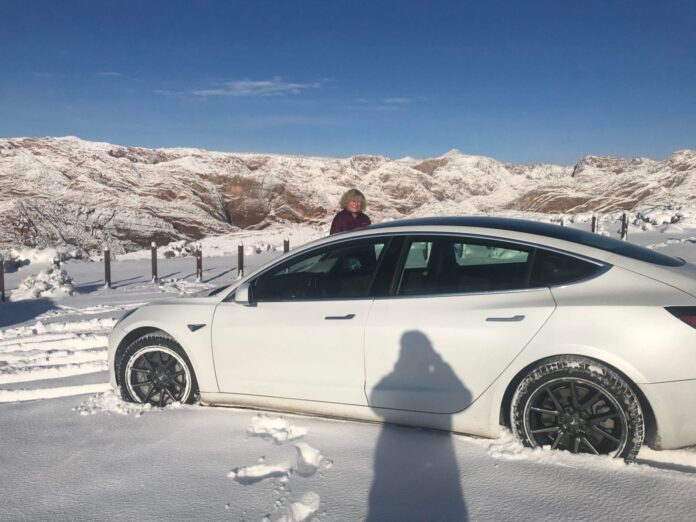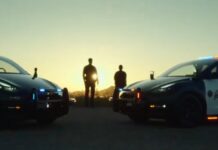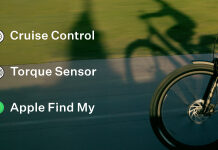[ad_1]
By Arthur Frederick (Fritz) Hasler, PhD, former leader of NASA Goddard Space Flight Center Scientific Visualization & Analysis Laboratory (creator of this iconic image), and avid CleanTechnica reader
Over the last seven years, I’ve driven three different Nissan Leaf models and now a Tesla Model 3 with the HW3 computer (for the past two years and 50,000 miles). I have frequently driven my brother’s Model S with the HW2 computer since he purchased it in 2017. I have also often driven my daughter’s 2018 Model X, which she has upgraded to the HW3 computer.
Tesla automation is a moving target. One of the joys of owning a Tesla are the frequent software updates that often bring improvements in the operation of the car. Some of the problems with the automation that I have listed below have already been eliminated, and others may be gone after the next software update. A few of the features that have been added since I bought the car: 1) One-pedal driving using regenerative braking to a dead stop and 2) Automatic stopping at stop lights and stop signs. However, I am waiting with baited breath for the V9 “Feature Complete” Autopilot for automatic navigation on city streets.
The (Amazingly) Good
I obsessively use the smart cruise control and the autosteering. I turn them on even when driving only a few hundred yards on city streets. Therefore, in nearly 50,000 miles of driving my Model 3, I have plenty of experience with the automation.
Autopilot’s steering is generally fantastic! On decent roads with yellow center lines and/or white lines on the side of the road and with turns no sharper than 20 mph, the automatic steering is like a rock. It is more accurate, steadier, and more consistent than even the best human drivers using 100% concentration. It is far superior to a distracted or slightly drowsy driver. It works in the rain, in bad visibility, and quite well even on partially snow-covered roads. I always supervise it like a hawk, but I’ve come to trust it under most conditions. My Model 3 steers much more accurately than my brother’s Model S with the HW2 computer did back in 2017, and his car doesn’t steer as well as my Model 3 even now. My Model 3 steers accurately on far sharper turns than the ProPilot on my 2018 Nissan Leaf SV. The Leaf would just break loose on any turn sharper than what is approved for 50 mph. The steering drifts slightly to the outside of a tight turn, whereas I would feel more comfortable if it cheated to the inside on right turns away from oncoming vehicles. It would also be less nerve racking if it would cheat away from vehicles that are right on the other side of the lane marker from me. (Editor’s note: As someone who has driven 16,000 miles with a Model 3 with the same hardware and software, as well as some unknown number of miles with a 2015 Model S with earlier versions of Autopilot, I agree with everything Arthur says, and he explains it very well. —Zach)
Also, unlike my 2018 Nissan Leaf, my Model 3 will automatically slow down from 55 or 65 mph to 40, 30, or 25 mph and successfully navigate turns as sharp as 20 mph. I don’t know how it knows to slow down, perhaps map knowledge of the highway ahead, but it takes the same turn the same way every time. The smart cruise control is also excellent. It will slow down and match the speed of the car in front of you, and also unlike my 2018 Nissan Leaf, it will slow down from 50 mph and come to a smooth stop behind a car stopped dead at a stop light. The smart cruise control also, unlike my Leaf, works down to 0 mph and in stop-and-go traffic. It eliminates the frustration of inching forward slowly in a stop-and-go traffic jam.
The auto-navigation is also generally excellent. On limited-access highways, it will pass a slow-moving vehicle, exit the passing lane, navigate interchanges from one highway to the next, take the exit you have designated in your navigation, slow down, and hand the control of your vehicle back to you with a ding dong signal. It is particularly useful in complex urban interstate systems where you have to be in just the right lane to navigate correctly onto the next highway.
In order to initiate the automatic steering, you need to have lines on the road. It can be initiated with just center yellow lines or just white lines on the edge of the road. However, if you are already driving with it on a road where the lines end, the car will continue to steer automatically. For those of us not among the ~2000 “Feature Complete” testers, I believe this is a preview for us of how the car will steer on any street.
The Good
Stopping behind a stopped car or stopping at stop signs and stoplights works very well. However it stops more abruptly than using the regenerative braking. I suspect that my brakes will wear out faster than if I exclusively used regenerative braking. Also, a feature I that I don’t like: It is quite annoying to be required to approve going through green lights.
It is also wonderful to be able to use the turn signal to automatically change lanes knowing that three cameras will prevent you from making an unsafe lane change. Unfortunately, for some inscrutable reason, it will sometimes stop and back off in the middle of a lane change or refuse to make the lane change at all.
Editor’s note: Again, I have all of the same opinions as Arthur on these points. Regarding the autostopping, due to it waiting a little bit longer than I’d like and not using the regen braking, I am in the habit of disengaging via the stalk as I approach a red light — striving to do so at just the right moment to not have to step on the brake or the accelerator (until the light turns green). It would be nice if the car had an option to brake for red lights & stop signs sooner, especially when you consider that the car’s computer could probably superbly calculate the ideal time to stop driving in order to come to a full stop behind the last stopped car or red light/stop sign only using regen braking. Of course, I do not know how well the FSD Beta software handles this, since I don’t yet have access to that. —Zach
The Bad
The automatic steering will almost never navigate a turn sharper than 20 mph. It will just break loose 2/3 of the way through a tight turn.
Forget about letting the autosteering navigate a rotary/roundabout — it just won’t do it.
The car will not always slow down for a sharp turn. It will slow down correctly for most turns no sharper than 20 mph, but not for others for no apparent reason. It would be helpful if the car would notify you that it is going to slow down like it does for stop signs and stop lights, so you would be confident that it is going to make the turn safely.
Crossing a long, curving intersection, the automatic steering will often pick the wrong lane on the other side. There are also other situations where the automatic steering will not make the correct lane choice.
Also, coming to an intersection with a left-turn lane and a through lane today, it picked the left-turn lane. I guess it didn’t know that my navigation route had me going straight. I would think going straight would be the default choice.
Stopping at stop signs formerly was unusable on my small backwoods street in Northern Wisconsin. The car would frequently stop 50 feet before the stop sign and then come to a jerking stop. However, recently, the stops have been smoother, and it sometimes stops only 5 or 10 feet in front of the stop sign. The feature works fine at stop signs and stoplights in the city.
I often drive under auto-navigation’s control on the 12-lane I-15 interstate highway on the Utah Wasatch Front in the Salt Lake City area. I find that the automatic lane changes are often inscrutable. It will change lanes for no apparent reason and then go right back to the same lane a short time later. I have a Utah Clean Fuels permit for my Model 3, so I can use the HOV lane even when driving by myself. I like to let the car automatically navigate the 5 lane changes to the HOV land and I like to stay there until just before my exit. However, Autopilot will exit from the HOV lane for no apparent reason even when I am driving 5 mph over the speed limit. It doesn’t give up — it keeps trying to exit the HOV lane. Therefore, I normally let the auto-navigation move me automatically to the HOV lane and then I turn it off. When I get within 3–5 miles of my exit, I turn it on again and let it automatically make the five lane changes to the exit.
In some cases, the auto-navigation refuses to exit the passing lane after passing a car even though that feature has been enabled in the controls.
This brings me to another issue. The car seems to spontaneously change settings even though I’m sure neither my wife or I have changed them. Just now I found the exit passing lane control turned off even though I am certain I didn’t change the setting. Other things I have found changed even though I am certain no one using my car has changed them: 1) Seat heaters set to level 3 when I have not turned them on, 2) Navigate on Autopilot turned off, 3) Regenerative braking set to Mild, etc. 4) My brother finds on his Model S that his charge limit has automatically been erroneously set to 50% at least two times. If he hadn’t happened to catch it, he wouldn’t have had enough charge to make his trip. Note: These are just the things that come to mind at the moment.
Phantom braking: My brother has observed phantom braking in his Model S even out on a freeway. Perhaps bridge shadows or road texture changes that run completely across the highway.
If you are driving down a narrow road and a big truck comes toward you, it will occasionally initiate phantom braking.
There are also a number of things that can cause braking that you would not do yourself:
- A vehicle crossing your path that will be well clear of you before you come to it. (Note this happens consistently and if I can remember to do it, I have learned to keep some pressure on the accelerator pedal to stop it from happening.)
- People walking on your side of the road. (You would normally give them a wide berth.)
- A big vehicle parked on your side of the road even well out of your lane of travel.
- Stop signs on nearby roads that merge at an angle.
- Crosswalk warning lights, even if not active.
I know that my Tesla can see traffic barrels because it visualizes them for me on my screen. However, it doesn’t seem to react to them. If a series of traffic barrels is gradually closing off a lane, the car heads towards them as though they weren’t there. Perhaps if I just let the car keep going toward the barrels, it would avoid them at the last instant, but I don’t have the nerve to try it.
Also, barrels are used to mark off a closed lane and sometimes the barrels will be placed up to 6 inches from my lane and an occasional barrel accidentally placed another 6” or so into my lane. Again, my Tesla apparently sees the barrels, but doesn’t react to them. Once more, the car might swerve away at the last instant, but I don’t have the nerve to try it out.
When I am driving on the freeway next to a monster 18 wheeler that is riding 3” from the lane markers, I like to cheat in my lane away from the truck. My Tesla, however, will continue to drive right down the center of the lane. Also, on city streets, when cars are parked partly out in my lane, my Tesla will not shy away from them.
The Ugly
Don’t interrupt “stop for stoplights and stop signs.” When stopping automatically at a stop sign or stop light, if you touch the accelerator just before it stops, the car will jerk so hard it will frighten you.
Don’t interrupt the smart cruise control: Recently, I was letting the car steer automatically around a tight 20 mph turn where it has successfully slowed down from 40 mph and navigated the turn perfectly hundreds of times. In the middle of the turn, it broke loose and I had to grab the steering wheel to keep from veering into the oncoming lane. I suspect that I had put slight pressure on the accelerator and that prevented it from slowing down correctly.
My Wish List
1) Of course, item number one on my wish list is for the general release of V9.2 (or the latest version) of “Feature Complete” Navigation on City Streets. Of course, I would settle for being included in the group of ~2000 people who have access to the software in their cars right now. I know that I would use it safely. I would gradually test it in more difficult situations with little traffic, and of course be always ready to intervene instantaneously. (Editor’s note: me, too!)
2) I would like to be able to routinely set the speed for more than 5 mph over the speed limit when using autosteer! Normally, the car refuses to exceed the speed limit by more than 5 mph. However, sometimes when driving at freeway speeds it will allow you to set the speed at any amount over the speed limit, at least for a while. My reason is as follows: In my area in the boonies of Northern Wisconsin, many times the navigation thinks the speed limit is 40 mph or even 25 mph when it should be 55 mph on a country road. That means that the smart cruise control is unusable in those situations. I am so spoiled by having the smart cruise control keep the speed at 5 mph over the speed limit that I am very annoyed having to do this manually. I believe this is caused by errors in the data base used by the navigation. Of course, correcting the database would be the best way to solve the problem, but I have no idea how to get this done. A solution that Tesla could implement immediately is to allow me to set the speed at more than 5 mph over the limit. (Editor’s note: This would probably be my #2 request as well because on many streets in my area, the flow of traffic is 10 to 15 mph over the speed limit, and you cannot go only 5 mph over the speed limit without being a problem — which leads to me driving much of the time with autosteering + cruise control on but my foot on the accelerator pedal to make it go faster, which also means that the car won’t autobrake. At least being able to set it to 10 mph would allow me to keep the foot off of the accelerator and “drive like a grandma.”)
3) I have encountered other situations where the speed limit database was faulty. Last year, when I-15 in Utah County, Utah, was under construction, the speed limit would erroneously drop from 55 mph to 25 mph, causing my car to brake dangerously. This would happen consistently for a short time in a couple of locations. I suspect it was picking up the speed limit from city streets passing under the freeway. I don’t know what Tesla could do about this, but if there was a way that we could report the problem and have it corrected it, that would quickly solve the problem in that location.
4) When I enter a town, my Model 3 automatically slows down to 25 mph or 35 mph. This is really nice because it prevents me from getting a speeding ticket. However, when I leave the town, I have to manually raise the speed to, say, 60 mph (5 miles over the speed limit). The car sees and reads the higher speed limit, so it would be really nice to have the option of having the car do this automatically.
More info on Dr. Arthur Frederick (Fritz) Hasler:
- Research Meteorologist (Emeritus): NASA GSFC
- Adjunct Professor: University of Utah Department of Meteorology
- Adjunct Professor: Viterbo University On-Line Studies
- PSIA L2 Certified Alpine Ski Instructor: Brighton Utah Ski School
Appreciate CleanTechnica’s originality? Consider becoming a CleanTechnica Member, Supporter, Technician, or Ambassador — or a patron on Patreon.
[ad_2]
Source link
















